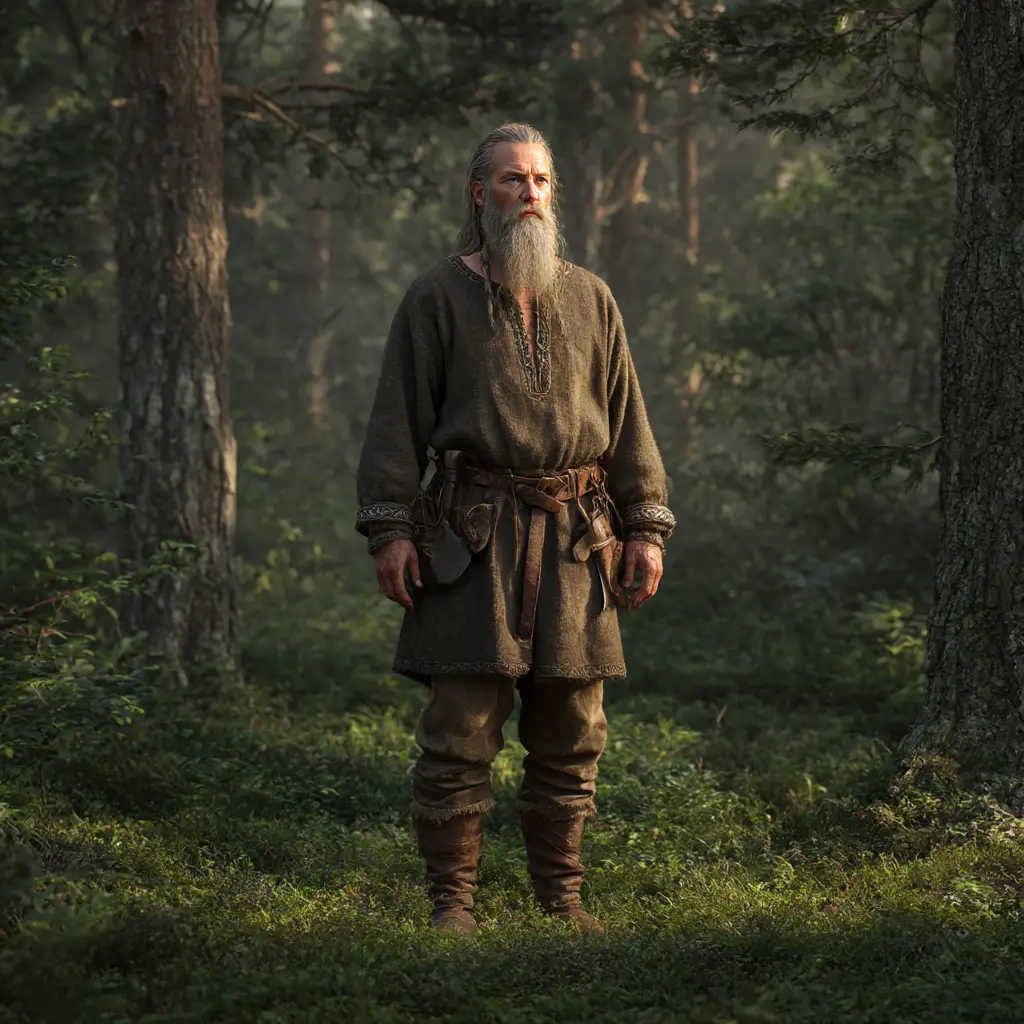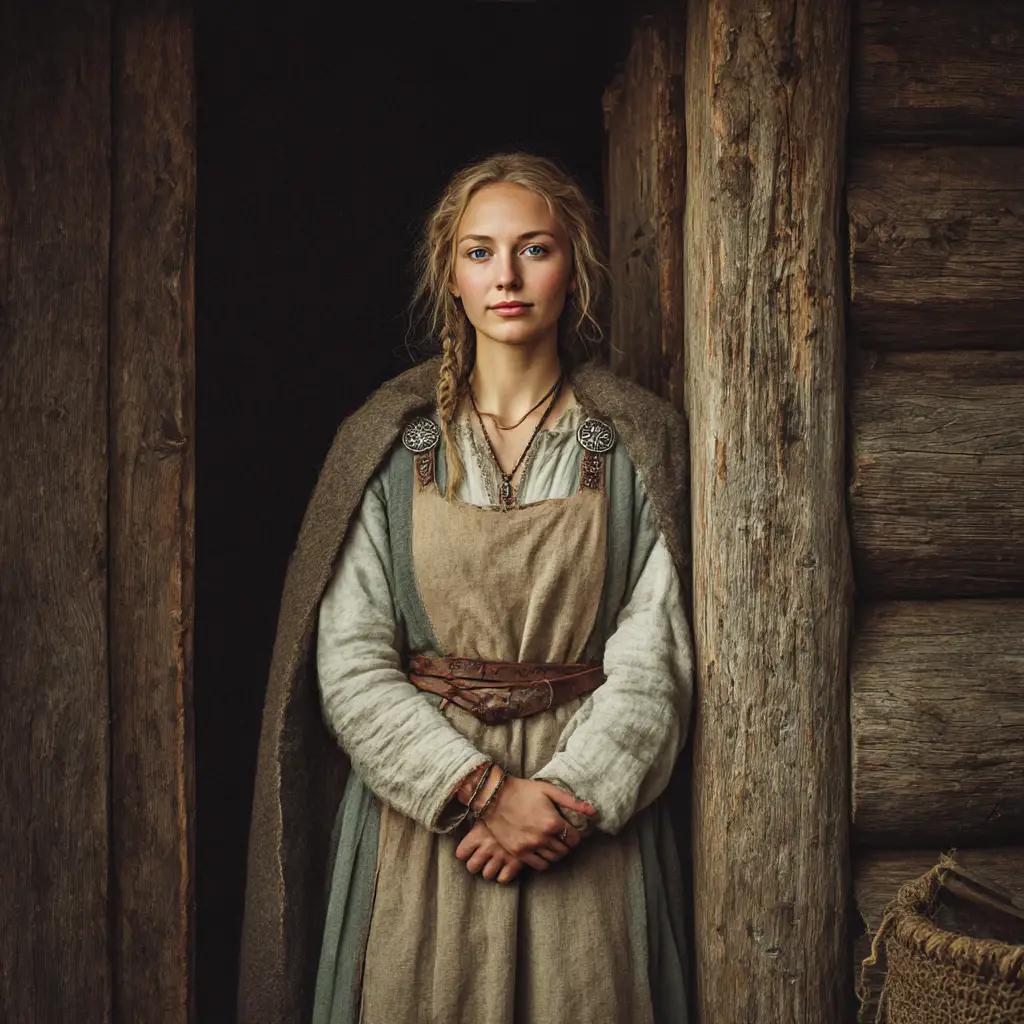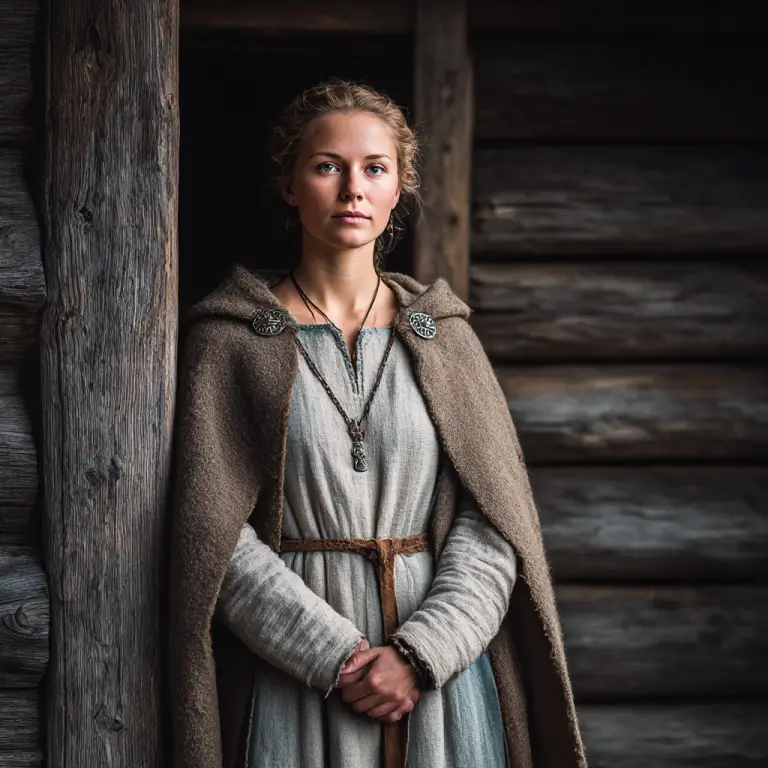Viking clothing was shaped by the climate of Scandinavia, the resources available, and the social structure of the time. Practicality was essential, as the Norse people lived in a harsh and often cold environment, but clothing also played an important role in showing status, identity, and even regional differences.
While the majority of what we know comes from archaeological finds, written sources, and textile fragments, a clear picture has emerged of how Viking men, women, and children dressed during the Viking Age (roughly 793–1066 AD).
Materials and Fabrics
The most common fabrics used in Viking clothing were wool and linen.
- Wool: Warm, durable, and water-resistant, wool was the main material for outer garments. It was often spun and woven by hand and could be dyed in various colours.
- Linen: Made from flax, linen was commonly used for undergarments and lighter clothing worn close to the skin.
- Silk and imported textiles: For the wealthiest Vikings, luxury materials like silk were traded from the East and used as decorative trims or small items of clothing.
Animal skins and furs were also used, especially in colder regions or for winter wear, although not all Vikings wore fur as commonly as is sometimes portrayed.
Clothing for Viking Men
Viking men typically wore several layers for warmth and versatility:
Tunic (kyrtill or serkr): A long woollen or linen shirt worn over the head, often reaching the knees. Tunics might be plain for commoners or richly decorated for higher-status individuals.
Trousers (brók): These could be tight-fitting or loose, often secured with a drawstring or belt. In colder climates, men sometimes wore woollen leggings underneath.
Cloak (skikkja): A large rectangular or semi-circular piece of woollen fabric, fastened at one shoulder with a brooch or pin. Cloaks provided warmth and were practical for travel.
Belts and accessories: Leather belts were used to carry knives, pouches, and other everyday tools.
Footwear was typically made of soft leather, often in a turn-shoe style, and fastened with toggles or laces.
Clothing for Viking Women
Women’s clothing shared similarities with men’s in terms of material but had distinct styles:
Underdress (serk or kirtle): A linen garment worn next to the skin, similar to a slip.
Apron-dress (smokkr or hangerock): A distinctive woollen overdress, usually worn over the underdress and fastened at the shoulders with oval brooches connected by beads or chains.
Shawls and cloaks: For warmth, women also wore woollen cloaks or shawls, fastened with pins or brooches.
Wealthier women decorated their garments with woven bands, embroidery, and imported trims. The overall ensemble often displayed family status and regional style.
Children’s Clothing
Viking children wore simplified versions of adult clothing, made from the same materials. As with adults, layers were used for warmth. There’s little direct archaeological evidence, but it is likely that practicality took precedence, with less attention to status or decoration.
Colours and Decoration
Contrary to popular belief, Viking clothing was not dull or colourless. Natural dyes created vibrant shades:
Blues and reds from woad and madder
Yellows from weld and birch leaves
Greens by over-dyeing yellow with blue
Browns and greys from natural sheep’s wool
Clothing was often decorated with patterned tablet-woven bands, embroidery, or metal trim. These designs could be intricate, particularly for the elite, and sometimes reflected religious or cultural motifs.
Jewellery and Accessories
Jewellery was worn by both men and women and served decorative and practical functions. Brooches, pins, and beads were used to fasten garments, while rings, armlets, and necklaces signalled wealth or social rank.
Common materials included bronze, silver, and occasionally gold. Some items were mass-produced from moulds, while others were finely crafted by skilled smiths.



